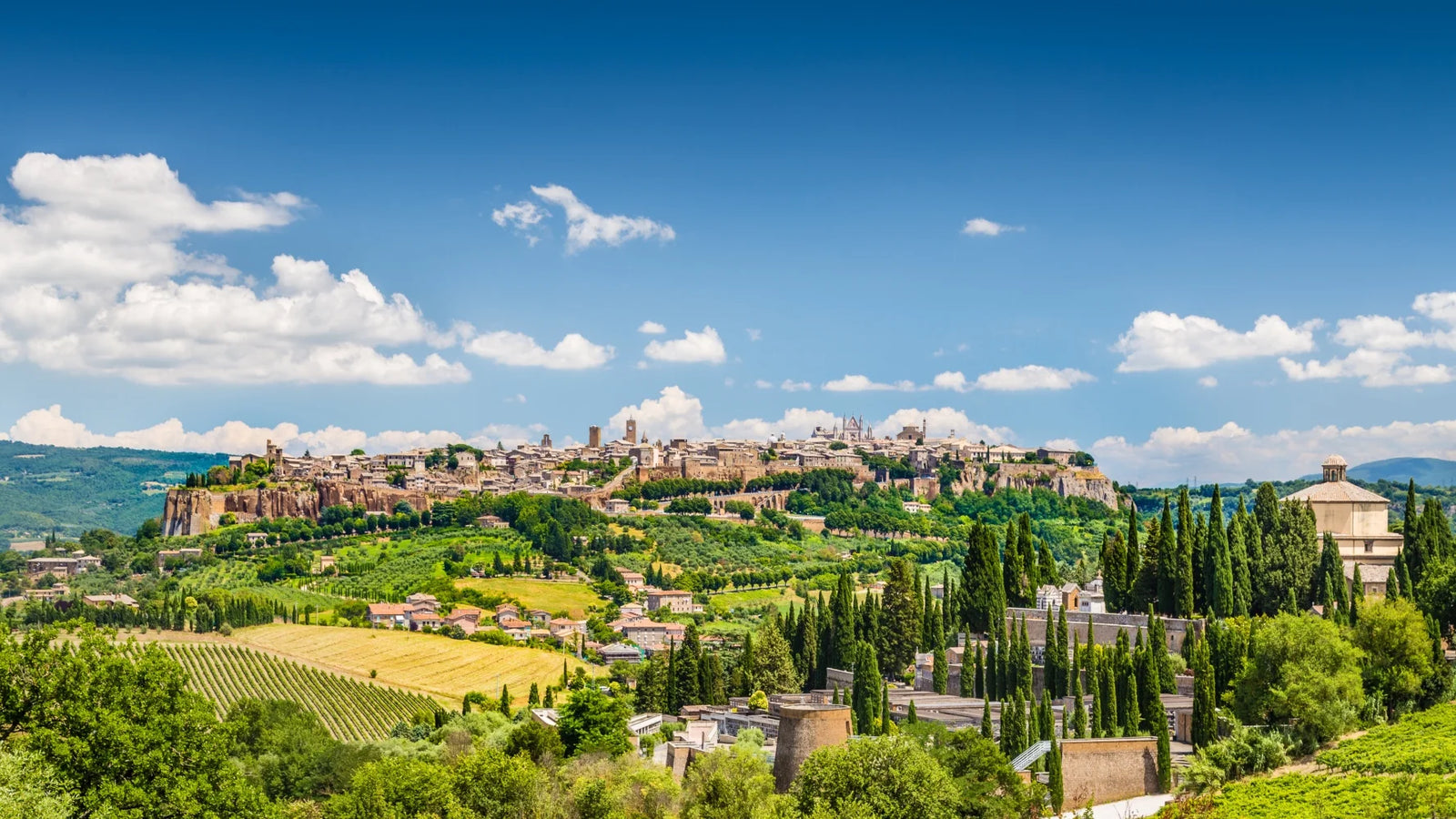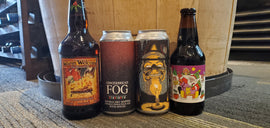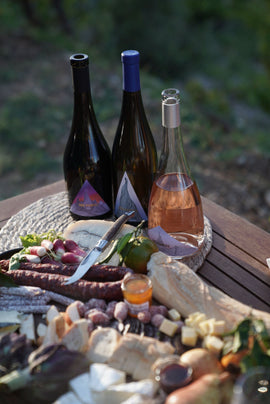UMBRIA
In 1906, the poet Giosuè Carducci became first Italian to win the Nobel Prize for Literature, largely on the strength of 56 poems he composed between 1877 and 1889, comprising three volumes that are collectively known as the Odi Barbare or The Barbarian Odes. The English translation of the title carries a pejorative charge its author did not intend; rather than referring to violent savages, Barbarians here are just the pre-Christian, Greek and Roman civilizations often celebrated in Carducci’s verse. The poet, an ardent patriot, connects these legends of antiquity to contemporary avatars of the Italian state like Garibaldi and Queen Margherita, forging and celebrating a useable collective past for a peninsula less than a decade removed from unification. The most famous lines though, are about Umbria: “Hail, green Umbria…..I feel in my heart the ancient home, my fevered brow touched by the olden gods of Italy.”
The region has been known as Italy’s “green heart” ever since - a sobriquet ubiquitous enough to come off as a cliche, but it’s more like a proverb. Though small, rugged, and perpetually in neighboring Tuscany’s shadow, there is something about Umbria that really ties the Italian tasting room together; its rolling hills and medieval towns occupy the center square of the Apennine peninsula, and it is the only Italian region without a coastline or international border. From Umbria, all you can see is more Italy/other Italians, in other words; perhaps that’s why Carducci (originally from Tuscany and a resident of Bologna for most of his adult life) thought it appropriate to make the place his conduit to the ages. It is definitely one reason it seems fitting to end our year here, before we even begin to consider the wines.
But there’s also more to Umbria than timeless, platonic Italianness. Like most ancient places where it’s easy to observe your neighbors but hard to escape them, the region has a complicated relationship to its surroundings. Umbria is eccentric: it houses old, relatively un-touristed villages with venerable but unfamiliar folkways; the giant lake Trasimeno, to rival the more famous Como, (featuring an island, Maggiore, in the center with exactly 12 residents), its own tiny Venice (the 50 house village of Rasiglia, with canals and waterways dating back to the middle Ages) and the world’s second largest human-made waterfall, Marmore, which the Romans initially constructed to divert unsanitary water away from a nearby town, but now produces hydroelectric power.
It is also the onetime site of the accidental republic of Cospaia (1440-1826.) Forgotten in a real estate transaction between Pope Eugene IV and the republic of Florence on account of confusion over two local streams with the same name, this tiny strip of land found itself abruptly without landlord, and the inhabitants took the opportunity to declare independence. They also declined to institute a formal government or legal system, build jails, prisons, police or military, and instead attempted to live by one written maxim, inscribed on a church door and parish bell: Perpetua et firma libertas or “Perpetual and secure freedom.” During its surprisingly durable existence, Cospaia became a tariff-free special economic zone, and buffer between the Papal States and the Duchy of Tuscany. Beholden to the laws of neither, it was also exempt from a tobacco-growing ban and thus had a monopoly on the production of the crop. This relative lack of rules predictably attracted all kinds of exiles, fugitives, mountebanks and annoying libertarian types who made the place a byword for contraband, leading to its incorporation into the Papal States at the end of the Napoleonic era. Each of its residents received a silver Papal coin and the authorization to continue tobacco production as compensation. I don’t know why there hasn’t been a prestige cable drama set there yet.
I would also love to find bottles I could claim were Cospaian for the club, but the wine from Umbria is distinctive enough on its on own - it doesn’t require (sorry) cosplay. This month we have a Sagrantino, the tannic, full-bodied red grown almost exclusively here; and a Grechetto di Todi, an ancient white varietal also known as Pignoletto.
Wishing you perpetual and secure freedom this holiday season,
Alan Hicks - Wine Buyer, Noe Valley
|
RoccaFiore FiorFiore Grechetto di Todi 2019 |
|
|
Region: Todi, Umbria, Italy |
About the Winery: Cantina Roccafiore farms 15 hectares (almost 40 acres) of vineyards in the rolling hills of the Umbrian countryside near the town of Todi. The Baccarelli family (father and son) bought the property in 1999, planted the local Grechetto and Sangiovese along with small parcels of Moscato Giallo, Sagrantino, and Montepulciano, and made their first vintage in 2005. Formerly in the energy business, they kept a mind toward sustainability from the beginning, building a renewable facility, using organic fuels for their tractors, and farming organically. Young Luca Baccarelli feels that this form of cultivation makes for soils richer in organic materials, fewer vine diseases, and healthier grapes. (See more on their sustainability program below). The training system is Guyot, on terraced hillsides; the soils are whitish clay, rich in limestone and chalk; and all vineyards face South-East, catching fresh winds from the nearby mountains. There are 6,500 vines per hectare, mostly from massal selection, and the yield is 85 quintals of grapes per hectare (roughly 3.5 tons per acre). Indigenous yeast fermentations. They use only estate-grown fruit. About the Winemaking: The grapes are gently pressed and the musts obtained decant in a natural way, the spontaneous fermentation takes place at a controlled temperature in steel vats and is closed in the containers in which it will carry out the subsequent aging; Aging: 12 months in amphorae and large oak barrels Slavonia in contact with the fine lees, does not carry out malolactic fermentation and, after bottling, rests at least 6 months in the bottle. Tasting Notes: straw yellow with golden reflections; Bouquet: pineapple, golden apple, yellow flowers and delicate notes of sweet spices; Taste: enveloping, fresh and savory, supported by good minerality, it is a wine of great elegance and complexity that will give its best 3 /4 years after the harvest. |
|
Winemaker: Paolo Cotroneo |
|
|
Price per bottle / per case $28 $302.40 |
|
|
Suggested Food Pairing: Butternut squash tortellini with butter and sage, Nidi di rondine pasta with fresh pecorino and warm honey (see recipe) Richer seafood preparations like tuna steak. |
|
|
Scacciadiavoli Montefalco Sagrantino 2015 |
|
|
Region: Montefalco, Umbria |
About the Winery: The Scacciadiavoli winery was founded in 1884 by Principe Ugo Boncompagni Ludovisi and got its name from an exorcist who used to live near the property that utilized the wine for his rituals. Scacciadiavoli means literally ‘devil chaser’. The winery was already advanced by the standards of that time. In 1954 Amilcare Panbuffetti was 71 when he acquired the property although he had worked there since he was 14. Alfio, Settimio, and Mario, his three sons, followed in his footsteps in 1977 and another Panbuffetti generation came after that in 2000. The future appears to keep the family together around the commitment of making good wine and gratefully continuing their ancestors’ trail. The estate now comprises almost 322 acres of which 87 are dedicated to vineyards. They cover the hillside of Montefalco and the surrounding area. This is Sagrantino territory other grapes are playing an important role in this area as well. Scacciadiavoli produces reds, whites, sparkling and dessert wines but Montefalco Sagrantino is their flagship. About the Winemaking: The wine spends 24 months in barriques, new and old, and 12 more months in the bottle previous to release. Tasting Notes: Brought to the nose it shows intense small red fruits, forest fruits and a spicy profile. The first sip is full of soft fruits, tannic, but balanced with fresh acidity. |
|
Winemaker: Giovanni & Eleonora Morone |
|
|
Price per bottle / per case $50 $540 |
|
|
Suggested Food Pairing: Rich meat dishes, either roasted, grilled or braised. Aged cheeses will also sing with this wine. |
|
Nidi di rondine, pecorino e miele caldo
(Bird nest pasta, pecorino cheese and warm honey)
Ingredients (serves 4)
- 1 sheet 16-inch square of fresh lasagna pasta
- 10 slices of fresh pecorino cheese 1/8 inch thick
- 2 cups of béchamel sauce
- 2 tbsp. wildflower honey
- 1⁄2 cup grated Parmigiano cheese
- 1⁄2 cup heavy cream
- Blench the lasagna in salted hot (not boiling!) water for 1 minute
- Drain and set flat on a clean and dry cutting board
- Spoon the béchamel sauce evenly on the pasta sheet
- Cover with the slices of pecorino
- Roll the sheet on one side and cut into 1⁄2 inch sections
- Place the bird nest in a baking pan large enough to accommodate all the pasta
- Pour the heavy cream on top (this to prevent the pasta from getting get too dry)
- Set the baking pan in the pre-heated oven at 485 F
- When the nest gets a color, take them out, add the honey, put back in for 1 minute
- Set the bird nests on plates, sprinkle with Parmigiano and serve them hot





